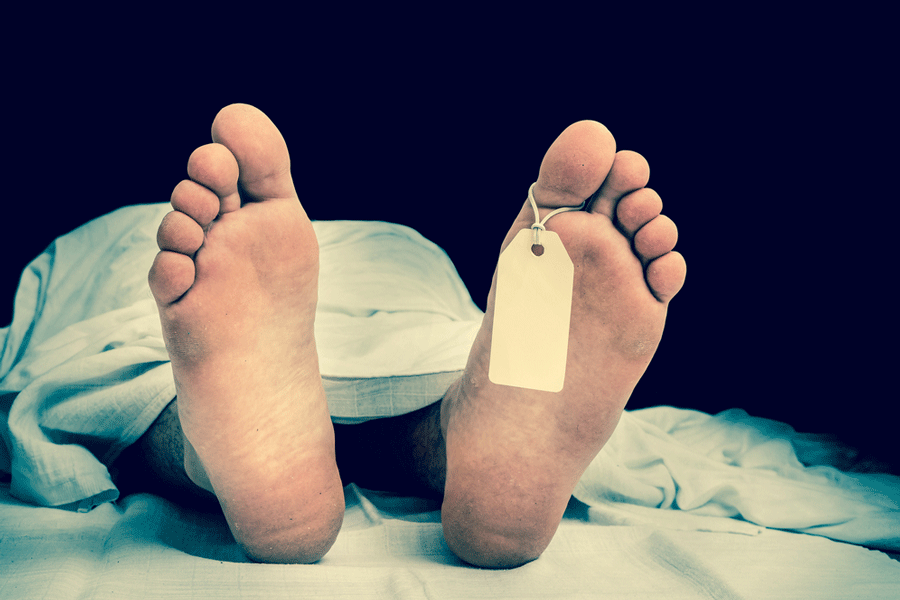The bodies of the two Ukrainian soldiers lay motionless in a field for months. Around them were bloodstains and their rifles.
The soldiers’ relatives identified their bodies from aerial footage gathered by drone. Though excruciating to watch, it seemed clear: The two men — Pvt. Serhiy Matsiuk and Pvt. Andriy Zaretsky — were dead. Yet more than four months later, the Ukrainian military still lists them as missing, even though subsequent drone footage provided by a fellow soldier weeks later showed them still lying there.
“I want to have his grave where I can come and cry all this out properly,” said Private Zaretsky’s wife, Anastasia, 31, who has been looking for closure since he was killed in November in the Zaporizhzhia region in Ukraine’s south.
This confusion and the lengthy, difficult process of obtaining an official declaration of the deaths is far from isolated and has emerged as another painful consequence of the two-year-old war.
Families, lawyers and rights groups say that the Ukrainian military is simply overloaded with casualties and unable to account for thousands of the dead, adding to the anguish of soldiers’ families.
Relatives of the two men in the field said that as far as they know, the bodies are still lying on the ground in the Zaporizhzhia region in Ukraine’s south.
The Ukrainian government does not disclose the number of soldiers missing in action. President Volodymyr Zelensky put the number of soldiers killed at 31,000 in February, and Kyiv has said that about half again as many are missing. (The US estimates of deaths are far higher, suggesting that by last August, 70,000 Ukrainian soldiers had died.)
The high number of missing soldiers underscores the nature of the ubiquitous trench fighting, which often leaves bodies from both sides abandoned in great numbers in buffer areas between the armies, muddying the picture of the war’s toll.
Some of the missing soldiers from this war have been captured by Russian troops, but others may be dead and unidentified, lying in morgues as the government struggles to work through the backlog and figure out who they are.
The ballooning figure of missing troops is a blow to Ukraine’s already battered morale, said Ben Barry, a senior fellow for land warfare at the London-based International Institute for Strategic Studies. “They just pile the pressure on Ukrainian society and pile the pressure on the military leadership and President Zelensky,” he said. “It’s a terrible problem.”
Frustration among civilians has mounted over the lack of answers and has occasionally burst into public view. There was a big protest in Kyiv last October, and subsequent ones in recent months, with relatives demanding more accountability for soldiers who had gone missing.
Ukrainian officials estimate the numbers of soldiers in Russian captivity at hundreds, perhaps thousands, but say that it is hard to know because Russia does not release lists of prisoners of war. In almost every prisoner exchange, they say, Russia releases some soldiers whom Ukraine had listed as missing in action — sometimes as many as one in five.
Confirming a death is particularly problematic when Ukrainian officials do not have a body, but it can be a long and difficult process even when they do.
Ideally, the Ukrainian military would have compiled a central genetic database drawn from the bodies of the dead and families of the missing, according to the International Commission on Missing Persons, a group based in The Hague that helps governments search across borders.
Petro Yatsenko, a spokesman for the Coordinating Headquarters for the Treatment of Prisoners of War, said one difficulty was that many families were reluctant to submit DNA samples while holding out hope their loved ones were still alive.
But the government’s testing is also piecemeal. Although Ukraine has 13 DNA laboratories working, the process of identifying a body can still take up to several months, said Artur Dobroserdov, Ukraine’s commissioner for missing persons.
To circumvent that bureaucracy, relatives have stepped in. They travel from morgue to morgue, sometimes aided by volunteers, looking at bodies and trying to identify them first by photographs, then later by asking relevant family members for genetic samples.
Tetiana Fefchak, a lawyer from western Ukraine, frequently goes to morgues to try to identify bodies, saying she finds that process more efficient than waiting for official declarations. “What do you suggest? For them to rot in there?” she said. “If you can do something yourself, do it.”
A law passed in 2022 was supposed to streamline identifications by allowing soldiers to donate genetic samples in advance of deployments. But the process is going “slower than we would want it to,” said a senior Ukrainian military officer familiar with it, speaking on the condition of anonymity to discuss an internal matter.
Relatives and advocates for the missing say poor communication from military commanders can sometimes make matters worse.
Private Zaretsky’s wife said the brigade commander did not reach out to the family. “Another lad, who stayed alive, took the big risk of telling me the story of how my husband died when commanders did not,” said Zaretska. “I understand that there are many deaths but it doesn’t give them the right to treat our family members like this.”
New York Times News Service











